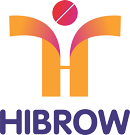Self Emulsifying Drug Delivery System of Fenofibrate to overcome the incomplete absorption of poor solubility
The objective of the research was to formulate Self Emulsifying Drug Delivery System (SEDDS) of Fenofibrate and was accomplished using
- Gelucire 44/14 as oily phase
- Cremophor RH 40 as Surfactant
- Lauroglycol 90 as Co-Surfactant
Fenofibrate loaded SEDDS showed good self-emulsification efficiency and released more than 90% of the drug in 60 minutes whereas marketed product showed about 40% drug release. The mean globule size of optimized Fenofibrate SEDDS was 13.04 microns.
Self Emulsifying Drug Delivery System of Fenofibrate was prepared using Gelucire 44/14 as oily phase, Cremophor RH 40 as Surfactant and Lauroglycol 90 as Co-Surfactant.

Prepared Fenofibrate SEDDS was characterized with respect to
1. Intrinsic Dissolution
The intrinsic dissolution shows the rate of dissolution of a pure pharmaceutical active ingredient. The intrinsic dissolution studies were performed with USP - type-l dissolution apparatus using 0.025%, 0.05%, and 0.75% SLS as a dissolution media. The Percentage release of Fenofibrate from the intrinsic dissolution was found to be 26.0±0.26, 16.1±0.31, and 15.2±0.31 in 0.05%, 0.025%, and 0.75% SLS medium respectively.
2. Solubility Studies
The results of the solubility study of Fenofibrate in various surfactant, co-surfactant, solvent and oils are shown in. The data indicated that the solubility is related to the hydrophilicity of oil (or) oil-surfactant mixture with more hydrophilic systems resulting in greater solubility values.
3. Solubility Studies
A series of SEDDS were prepared and their self emulsifying properties were observed visually Visual observations indicated that at higher levels of surfactant, the spontaneity of the self-emulsification process was increased. When a co-surfactant is added to the system, it lowers the interfacial tension.
4. Phase Separation
The results of the phase separation studies of SEDDS formulation indicated that the phase separation did not occur in most of the formulation, but occurs in few formulations.
5. Emulsion Droplet Size Analysis
The particle size of emulsion was determined by laser diffraction studies (particle size analyzer, Microtrac blue wave). The range of particle size was 5.08 μm, 13.04 μm, 131.6 μm, at d10, d50 & d90 respectively.
6. Pseudo Ternary Phase Diagram
Pseudo ternary phase diagram was constructed to identify the self emulsifying regions and to establish, the optimum concentrations of oil, surfactant and cosurfactant. The results indicate that efficiency of emulsification was good when the surfactant concentration was more than 50%.
7. Hydrophilic Lipophilic Balance (HLB) Value Determination
The HLB value of SEDDS formulation can be determined by following formula.
HLB blend of mixtures = (A×PA/100) + (B×PB/100) + (C×PC/100)
A, B, C → HLB value of oil, surfactant and Co-Surfactant respectively.
PA, PB, PC → Percentage of oil, surfactant and Co- Surfactant respectively in each formulation.
8. Self-Emulsification Efficiency Assessment
The assessment was done visually. The SEDDS formulation formed micro-emulsions (Graded A). Whereas few formulations become emulsions of (Graded C) and (Graded D) or un emulsified oil (Graded E).
9. In vitro dissolution study in comparison with Lipicard capsules, 200 mg of US-Vitamins Private Limited.
In-Vitro drug release studies were performed with USP 2 dissolution apparatus using 0.05%, SLS as a dissolution medium. One of the formula showed 90% drug release where as the marketed product showed about 50% drug release at the end of 45 minutes.
So, it can be concluded that SEDDS of Fenofibrate will be more bioavailable, which may result in reduction in dose and will improve patient compliance.


